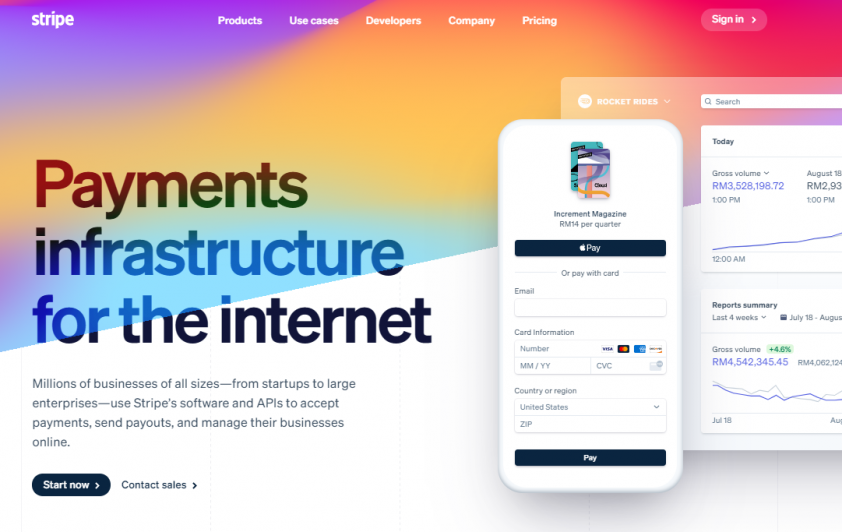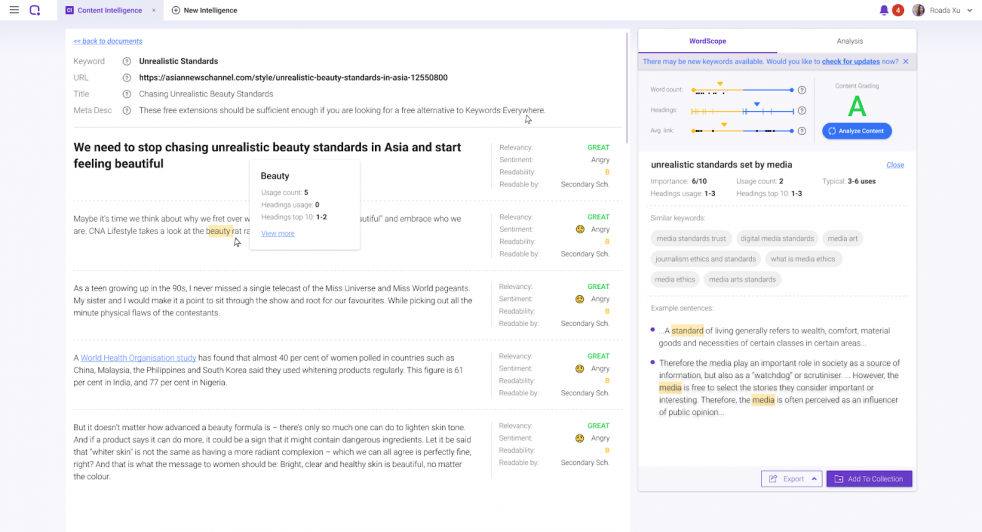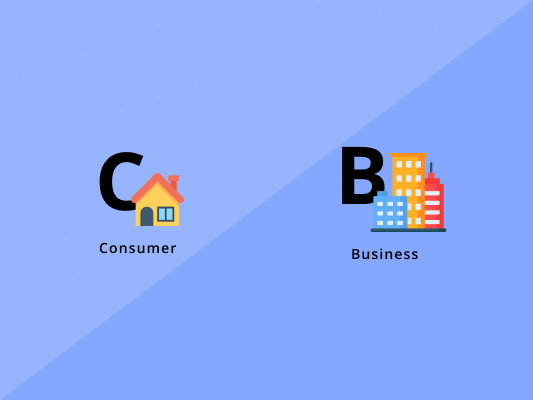What is C2B eCommerce? Here are the dos and don’ts you need to know when using consumer-to-business.
A prevalently rising eCommerce business model, C2B eCommerce, is yet to reach the common people’s views.
Unlike most conventional business models, the consumer to business (C2B) model allows companies to gain from their consumers and vice versa.
In this business system, firms gain from customers’ willingness to contribute marketing tips or data to the business or quote their own prices.
In the same faith, consumers benefit from direct payments, flexibility, reduced prices, or free products and services.
According to Brent Walk, vice president @ C2B solutions, “The main feature of C2B is that clients offer value to the business.” It can be clients co-creating product/service concepts, solutions, and ideas with a firm via social media or any other channels.
C2B eCommerce Trends
C2B is the complete opposite of the traditional system. Those who are usually considered as end-users develop services and products consumed by organizations and businesses they purchase from.
In other scenarios, instead of a company advertising a product or service to prospects, customers now demand a product or service at a certain price that they are happy with and wait for the business to fill the gap.
This type of eCommerce model is now becoming very popular thanks to the world-wide web’s power. Clients are now beginning to understand the power they have and are utilizing it to get better deals. A good example is Upwork.

It was one of the first sites to offer the C2B model where users can post services they offer, and interested businesses can reply with their own bids.
How does it work?
The consumer to business model has performed extremely well online because of easy access to many loyal customers.
In cases where the business transactions were mainly directional, with firms pushing products and services to customers, this new bi-directional system has allowed clients to become their own entities.
What’s more, reductions in the cost of web development services, high-quality printers, and video cameras give clients instant access to communication and promotion tools that were only limited to big multinationals previously. As such, both businesses and consumers can gain from the C2B business system.
That said, for a C2B model to be completely fulfilled, the parties must be distinctly defined. The customer can be anybody who has something valuable to offer a company, either a product or service—for instance, a photographer or blogger providing stock photos to brands.
The customer can also answer survey queries via a survey website or provide job recruitment services by referring people via referral hiring websites like fiverr.com.

In this case, the company can be any brand planning to purchase services or goods from people either indirectly through an intermediary or even directly. The intermediary would link the brand that requires a service or need to different individuals acting as the sellers or buyers.
The intermediary or the go-between promotes products and services via various distribution platforms and provides consumers technical, logistical, and promotional expertise.
For instance, the go-between can be a firm seeking to fill a job vacancy through a referral hiring website, a firm looking to advertise online via Facebook ads effectively, or a digital marketing company that needs marketers to take surveys and provide insights into how effective their services are.
Because C2Bs are fairly new, fundamental legal matters such as invoice clients or receive payments are yet to be sorted out completely. Unlike traditional models where wages would be paid to a specific group of employees, C2B enterprises, in most cases, have to process hundreds of payments to different clients.
Luckily, the go-between firms usually take care of the legal and financial factors of C2B engagements.
Services such as Google Wallet, PayPal handle payments while Google AdSense pays webmasters by making payments through checks incurring shipping fees for Google and currency conversion fees for overseas users.
Growing your client to business requires commitment and some special skills as well. Just like B2B business models rely on account management and sales function to develop and strengthen client relationships; C2B, brands interested in extending their business to reach a wider audience should consider these tools:
- Social media channels such as Twitter followings and Facebook pages
- Market research ( segmentation, qualitative interviews, quantitative surveys)
- Consumer feedback avenues include channels for suggestions/comments, customer service lines, and ratings/reviews.
- Having a powerful presence at trade conferences and conventions, advertising in trade journals, digital marketing, and other conventional awareness campaigns.
What Is The Difference Between B2C and C2B?
Business to consumer or B2C is one of the most popular business models at the moment. The B2C system is ideal for firms that sell services or products directly to consumers off-line or online. Here, a customer can see different products on the website, select a product and then order it.
This form of business does not require an intermediary and minimizes the product’s general cost for consumers. Business to consumer businesses’ main goal is to make it seamless for buyers to purchase services or goods they require and at their own convenience—some examples of B2C companies including Facebook, Alibaba, and Netflix.
On the other hand, brands that follow the consumer to business model consumers offer services and goods to businesses in exchange for payment. The less known business model is the opposite of B2C or B2C, where businesses sell goods and services to customers.
Another unique feature of the C2B model is that it allows consumers to quote price tags for what they want to purchase. In other cases, a C2B business identifies sellers who are eager to sell products or services at a price that the customer wants.
Next, let’s look at how C2B benefits you.
Pros and Cons of C2B eCommerce
C2B model’s popularity is rising steadily because of the easy access to loyal customers to specific brands.
Unlike before, where business transactions were solely one-directional from businesses to consumers, the new model has allowed consumers to become their own “businesses.”
But like many other business models, C2B eCommerce has its own advantages and disadvantages. Let’s check them out.
Advantages of the C2B model
- Abundance of Choice
Having many consumers providing a certain service or product means businesses have more options based on customization, price, quality delivery time, and regular supply. This offers the best value for the money of brands.
- Builds loyalty
Getting reviews or suggestions from consumers about the type of products they want at a certain price is one of the best ways to build trust and loyalty. It gives brands trustworthiness and authenticity that even money cannot buy.
- Boost sales
Your brand awareness will increase when many consumers are talking about your product or service. In return, this may boost your eCommerce sales too.
Disadvantages of C2B models
- Fulfillment problems
Some companies have also encountered fulfillment problems. Even after placing an order or requests to a consumer, there can be problems with a delivery, responses, mix-ups, and so on. This leaves the companies dissatisfied and unhappy.
- Businesses no longer decide on the price.
Unlike before, where the companies decided the price, in c2b, consumers are the ones who determine what they want to be paid for their services or products, putting the company at a disadvantage.
What are C2B examples?

There are a few companies whose trading system mirrors C2B. Online marketing websites such as Google Adsense, Commission junction, and Amazon are good examples of C2B models. People can display contextual ads, promotional banners, or any other advert on their sites. People are commissioned to offer selling services to the firms.
Online survey sites such as Survey Monkey, Surveyscout, and GozingSurveys are also examples of C2B models.

People answer the companies’ queries in exchange for payment. Blogs, too, have opened up opportunities for news C2B apps by providing tools to qualified people to express themselves inexpensively through articles and posts.
For example, Nano publishing is a popular option for C2B models. Using blogs, individuals share information about different topics depending on their level of expertise. They are paid per published articles or commissioned on affiliation or advertising revenues created by traffic on their blogs.
Also, channels such as Google Video and Fotolia are examples of new C2B schemes.

Anyone can sell digital content such as videos, animation, icons, images, and photos on the sites. Innovative digital content is a good idea for C2B businesses as they are simple and inexpensive to produce. They can also be shared easily and aren’t perishable.
That said, this type of business between companies and individuals comes with new aspects that are yet to be clearly defined by any law. For instance, in the C2B arrangement, people are supposed to bill and receive payment legally. However, billing is not clearly defined because most consumers do not own companies, and it is unclear how they get paid.
Similarly, when it comes to how brands pay consumers is not clear-cut either. Traditional companies usually pay salaries to employees who are clearly defined. Still, C2B intermediaries must deal with many people while overcoming issues such as varied languages, fairly high fees for low payments, different currencies, diverse payment methods, and different locations.
To counter such hurdles, the companies use various techniques. For instance, Google Adsense pays Webmasters by sending checks in US dollars, incurring currency conversion fees for non-US users. Some firms use wire transfers to pay their members or affiliates.
In a scenario where members are unwilling to share their account data or where wire transfers prove expensive, companies such as PayPal and Stripe offer solutions that allow payments between companies and people or between two people through a virtual account.

These solutions will continue to be more popular as C2C and C2B business models continue to develop. They offer the most practical and inexpensive way to send payments to anybody around the world.
The surging use of various open-source apps by firms is also at the core of the C2B model. Brands utilize software originally developed by consumers to manage operations such as CRM and CMS. The C2B model transforms the e-commerce sector by introducing new trading options paving the way for new social-economical behaviors.
What are the dos and don’ts?
Here’s a look at what you should do and not do when attracting leads in the C2B model:
The dos in C2B eCommerce:
- Be Strategic
Who is your main prospect, and what they want from you? Have a plan to handle all their needs and solve their problems. This means you must understand your end-users.
- Have a Plan
Plan to attract leads through multiple channels. This will ensure that you know what to do at what time, as well as monitor results.
- Handle Leads
While generating leads is crucial, closing those leads is more important. Do not just channel 90 percent of your resources to creating leads and only 10 percent into handling the leads. If it’s possible, close the leads yourself. Do not rely on your sales team to do everything for you.
- Be Clear and Direct
Craft messages that clearly define how you will solve problems for clients. Technically, you will want to design 2 to 3 messages customized as you measure and track your campaigns’ results.
- Have a strong presence where prospects are
Be where you are needed. If your potential clients are using Google to search for brands like you, have a powerful presence on search engines. If they are active on social media, ensure your firm has an optimized social media presence.
The don’ts in C2B eCommerce:
- Focus on Yourself
Attracting new prospects is about solving problems and meeting needs. So, concentrate on customers and what they require from you.
- Be Afraid to Try Something New
Do not ignore new channels or tactics. Though you may have a plan, the hypothesis is not always perfect. But you will not know until you give it a try.
- Try to Be Everything to Everyone
Focus on your target audience and what your firm offers; people that you know what they want. Do not try to help everyone.
- Make It Hard to Reach You
Once a prospect lands on your site, it should be effortless to reach you. Put contact data both in front and center.
How to make C2B eCommerce work for your business?
In a C2B business system, the consumer or the seller is not the only party who has to make an effort to sell their products or services; the business must develop skills to engage the seller and choose the best deal possible.
For the model to work, businesses must invest in customer feedback channels and market research tools.
That said, it is important to identify the sentiment behind your copy and content. It gives you an insight into what your audiences or customers feel when they are consuming your article.
Just enter your copy or content in the BiQ’s Content Intelligence, and it will show you the exact sentiment.

This sentiment comprises 9 categories to understand better if your content matches the sentiment you want to deliver to your audience.
The right sentiment will help you in the long run because it helps you connect and build strong relationships with your audience. Thus, improving your brand awareness.
This essentially means that involving the consumer in all business decisions is vital for consumer-driven e-commerce.
Other than knowing the sentiment, you can also use BiQ’s Content Intelligence to perfect your content. Check them out in our previous post.
Bottom line
New C2B is still a growing business system that can work as a brand’s entire model or an extension of another main venture.
Like any other business, your success will heavily depend on your understanding of the market and your willingness to implement trending technologies that make engaging consumers seamless. It is a tactical choice where involving the consumer in almost all business decisions is quite mandatory.
Have you tried out any C2B eCommerce strategies that have proven successful? Let us know in the comments below!




